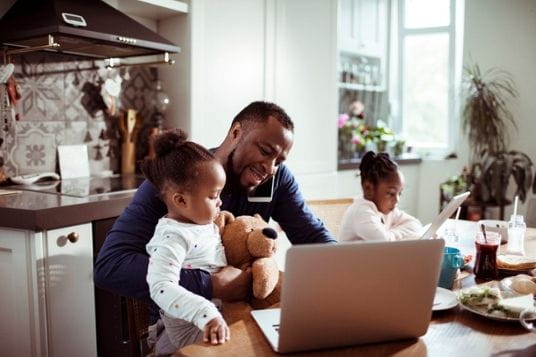Many Americans will gather for Thanksgiving this year to reconnect, express gratitude and gobble up delicious turkey and treats.
While Thanksgiving may center around togetherness, it’s also a peak time for home cooking fires and food poisoning. Nothing ruins a good Thanksgiving gathering faster than a trip to the urgent care or emergency department.
“Unfortunately, Thanksgiving Day cooking and activities can be a popular time for urgent care or emergency room visits,” said Samia Kadri, a family nurse practitioner with Banner Urgent Care in Phoenix, AZ. “Foodborne illnesses, fryer and/or oven burns, lacerations (cuts) or physical injuries are a few of the reasons for the increase in visits.”
To avoid injury and foodborne illness like food poisoning, Kadri helped put together 10 helpful tips to make it a Thanksgiving to remember—in a good way.
Food preparation
1. Thaw your bird the right way.
Always keep your turkey in the freezer until you’re ready to thaw it. There are three safe ways to defrost meat or poultry: in the microwave, a cold-water bath or refrigerator. Never thaw your turkey by leaving it on the counter.
“Raw or undercooked turkey and its juice can make you and your family ill,” Kadri said. “For example, turkey can contain bacterial Salmonella, Clostridium perfringens, Campylobacter and other germs.”
For detailed defrosting tips, check out “Chill Out: A Guide to Freezing and Defrosting.”
2. Clean your hands and kitchen surfaces often.
Wash your hands for 20 seconds with soap and running water. Wash and clean kitchen surfaces, utensils and cutting boards frequently with hot, soapy water. This is especially important after using the bathroom, working with uncooked food and before touching other foods that have already been prepared.
Wash fruits and vegetables before preparing but do not wash eggs, meat or poultry, which can spread bacteria.
3. Separate raw foods from prepared foods.
Keep meat, poultry, seafood and eggs from all other foods at the store, in the refrigerator and while preparing. Use separate cutting boards, plates and utensils for cooked or ready-to-eat food, like salads and fruit and vegetable platters.
4. Properly prepare the stuffing.
Cook stuffing in a casserole dish to ensure it is properly cooked. Technically speaking, this turns your stuffing into dressing, but cooking these starchy ingredients outside of the turkey can lower your risk of foodborne illness.
If you’re set on having your stuffing stuffed (literally) inside the cavity of the turkey, the U.S. Department of Agriculture advised that everything inside the bird and stuffing should be cooked to at least 165 degrees Fahrenheit. When stuffed, it takes a longer time to cook the turkey, so it may require some additional patience. Also, don't overstuff your turkey. This can prevent the turkey from cooking evenly and increase the risk of food poisoning.
Use a food thermometer to check internal temperatures and wash it with hot, soapy water after using it.
Cooking safety
5. Make the area around the stove and oven a kid-free zone.
If it’s a large family gathering, it’s likely that kids will be running around. Just keep them out of the kitchen area—away from ovens, stoves and sharp objects like knives. It’s also important to teach children to wait for hot dishes and hot drinks to cool down, so they don’t risk burning themselves.
Other things to keep in mind if young children are around is to use LED or flameless candles to avoid house fires and burns and to stow away any chemicals, cleaners and medicines out of reach to prevent poisoning.
6. Fully cook the turkey.
To ensure your turkey is fully cooked, insert the thermometer into the thickest part of the meat to make sure it has reached the minimum cooking temperature (165 degrees Fahrenheit). The thickest parts are the innermost part of the thigh, the innermost part of the wing and the thickest part of the breast.
Once cooked, let the turkey rest for 15-20 minutes before carving. This will allow the juices to redistribute throughout the meat.
7. Leave the turkey frying to the pros.
The National Fire Protection Association (NFPA) strongly discourages the use of turkey fryers to cook your turkey. Most of these fryers require large quantities of high-temperature cooking oil and the burners can ignite the oil, causing burns and possible damage to your property.
However, if fried turkey is what you want, the NFPA shared these tips to safely cook your turkey:
- Don’t overfill the cooking pot with oil.
- Never leave the pot unattended.
- Make sure the turkey is defrosted before putting it into the hot grease.
- Use proper utensils and safety gloves/mittens and be very careful when handling the pot, lid and handles.
8. Be prepared for fire and injury.
Unfortunately, accidents do happen. Here are some safety precautions to keep in mind so you are prepared:
- Store a fire extinguisher in your kitchen.
- Keep a lid or baking soda nearby in case of a small grease fire on the stove.
- Make sure your first aid kit is well stocked with supplies
- Turn off oven and burners when you’re finished cooking.
- Keep pot handles inward.
You can treat minors cuts and burns at home by following these steps. However, if you or a guest have difficulty breathing, unrelenting pain or large surface area burns, call 911. For deep cuts and excessive bleeding, seek medical attention as well.
Post-meal reminders
9. Refrigerate leftovers promptly.
Don’t let food poisoning get in the way of your Black Friday shopping. The bacteria that cause food poisoning multiply quickest in the “danger zone” of 40 degrees to 140 degrees Fahrenheit. When your turkey and other perishable foods (cooked or uncooked) sit out longer than two hours, your risk for foodborne illness goes up.
Before you head to the couch for your post-Thanksgiving food coma, make sure you stick food in the refrigerator within those two hours, so everyone is safe from getting sick. Storing leftovers in shallow containers will help them cool more quickly. Prevent cross-contamination by completely and securely covering foods in the refrigerator.
Leftovers can be safely stored in the refrigerator for three to four days, or frozen for three to four months. Be sure to reheat foods to a proper temperature of 165 degrees Fahrenheit.
“Clostridium perfringens, one of the most common causes of food poisoning, grows on cooked foods left out at room temperature,” Kadri said. “Major symptoms are vomiting and abdominal cramps occurring within six to 24 hours after ingesting.”
10. Consume leftovers within a few days.
Refrigerated leftovers, whether Thanksgiving or any other leftovers, should be eaten within three to four days. Food stored in the freezer is good for three to four months.
If you store your leftovers in the freezer, label with an expiration date. When ready to eat, defrost food in the refrigerator and not on your counter.
Reheat leftovers to an internal temperature of 165 degrees Fahrenheit.
Takeaway
Thanksgiving is a time of reflection and not infection. By heeding these 10 safety tips, you’ll surely make this the best Thanksgiving to remember.
If you have any questions about how to prevent food poisoning, the symptoms of food poisoning, or if someone you know suspects food poisoning, call the Poison Control helpline at 800-222-1222.


